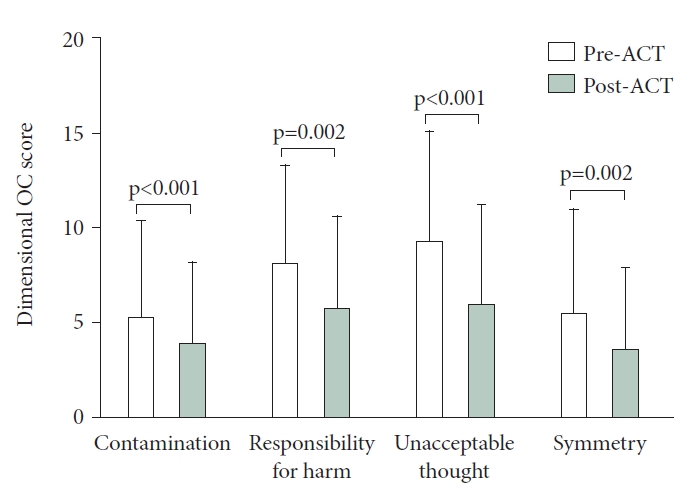 |
 |
- Search
| Psychiatry Investig > Volume 20(10); 2023 > Article |
|
Abstract
Objective
Methods
Results
Supplementary Materials
Supplementary┬ĀTable┬Ā1.
Notes
Availability of Data and Material
The datasets generated or analyzed during the study are available from the corresponding author on reasonable request.
Conflicts of Interest
Seung Jae Lee, a contributing editor of the Psychiatry Investigation, was not involved in the editorial evaluation or decision to publish this article. All remaining authors have declared no conflicts of interest.
Author Contributions
Conceptualization: all authors. Data acquisition: all authors. Formal analysis: all authors. Funding acquisition: Seung Jae Lee. WritingŌĆöoriginal draft: all authors. WritingŌĆöreview & editing: Seung Jae Lee.
Funding Statement
This work was supported by the National Research Foundation of Korea (NRF) grant funded by the Korea government (MSIP) [grant numbers 2021R1A2C2004720].
Figure┬Ā1.

Table┬Ā1.
Table┬Ā2.
Values are presented as mean┬▒standard deviation. AAQ-II, Acceptance and Action Questionnaire-II; AAQ-OC, Acceptance and Action Questionnaire for Obsessions and Compulsions; CFQ, Cognitive Fusion Questionnaire; Y-BOCS, Yale-Brown Obsessive-Compulsive Scale; DOCS, Dimensional Obsessive-Compulsive Scale; BDI, Beck Depression Inventory
Table┬Ā3.
Bottom-left off-diagonal correlations for zero-order correlations, top-right off-diagonal correlations for partial correlations controlling for depression. ACT, acceptance and commitment therapy; DOCS, Dimensional Obsessive Compulsive Scale; AAQ-OC, Acceptance and Action Questionnaire for Obsessions and Compulsions; AAQ-II, Acceptance and Action Questionnaire-II; CFQ, Cognitive Fusion Questionnaire; Y-BOCS, Yale-Brown Obsessive-Compulsive Scale
Table┬Ā4.
| Variables |
Contamination* |
Responsibility for harmŌĆĀ |
Unacceptable thoughtsŌĆĪ |
Symmetry┬¦ |
||||||||||||
|---|---|---|---|---|---|---|---|---|---|---|---|---|---|---|---|---|
| B | SE | ╬▓ | p | B | SE | ╬▓ | p | B | SE | ╬▓ | p | B | SE | ╬▓ | p | |
| Constant | 1.37 | 0.59 | 0.03 | 1.64 | 1.08 | 0.14 | 0.33 | 1.06 | 0.75 | 0.56 | 0.94 | 0.55 | ||||
| AAQ-OC | -0.02 | 0.03 | -0.10 | 0.57 | 0.03 | 0.05 | 0.12 | 0.48 | 0.12 | 0.05 | 0.38 | 0.02 | 0.08 | 0.04 | 0.33 | 0.06 |
| AAQ-II | 0.09 | 0.06 | 0.30 | 0.14 | 0.27 | 0.11 | 0.49 | 0.01 | 0.11 | 0.10 | 0.18 | 0.31 | 0.10 | 0.09 | 0.21 | 0.27 |
| CFQ | -0.03 | 0.07 | -0.11 | 0.62 | -0.14 | 0.12 | -0.25 | 0.24 | 0.02 | 0.12 | 0.04 | 0.84 | -0.04 | 0.10 | -0.09 | 0.67 |
REFERENCES
- TOOLS







